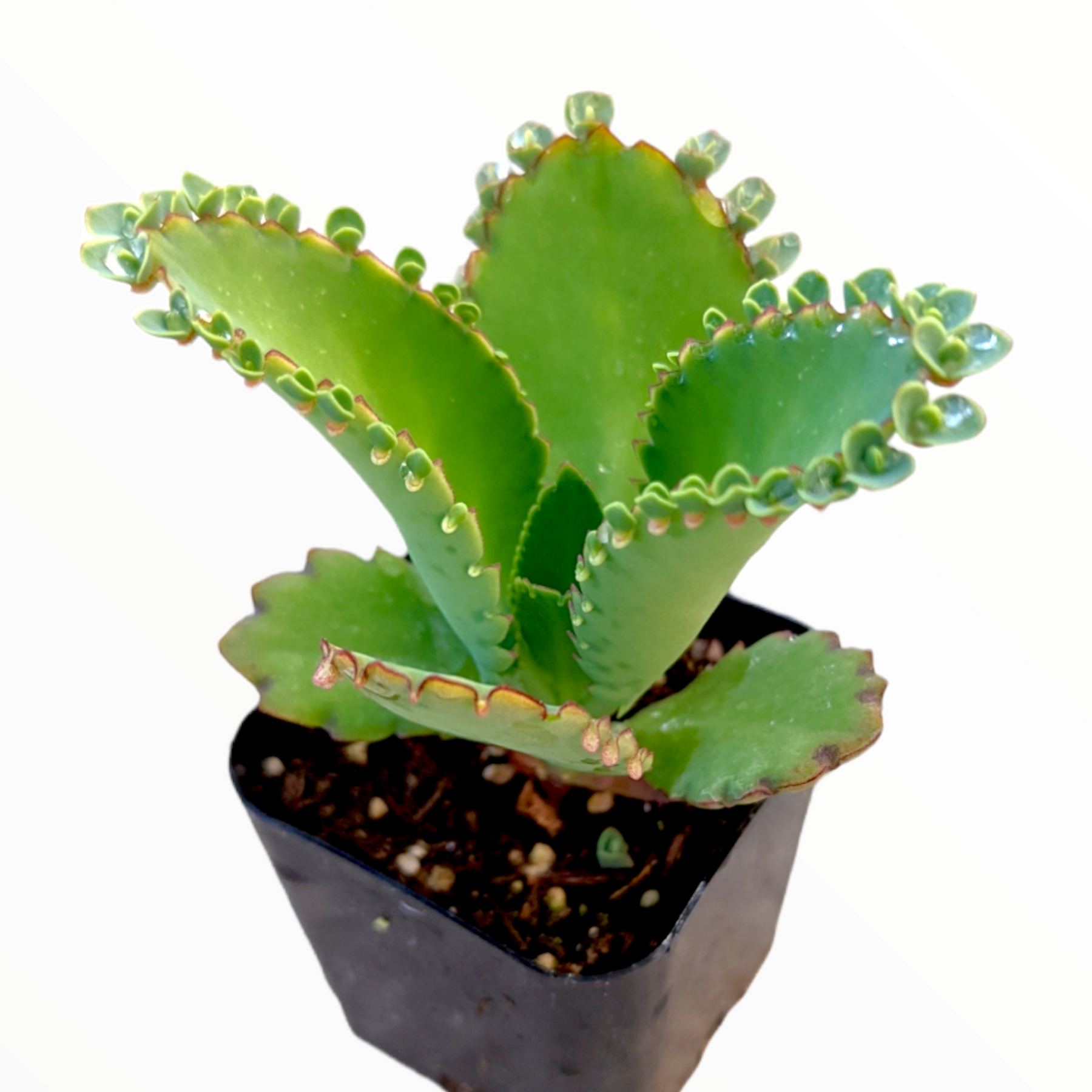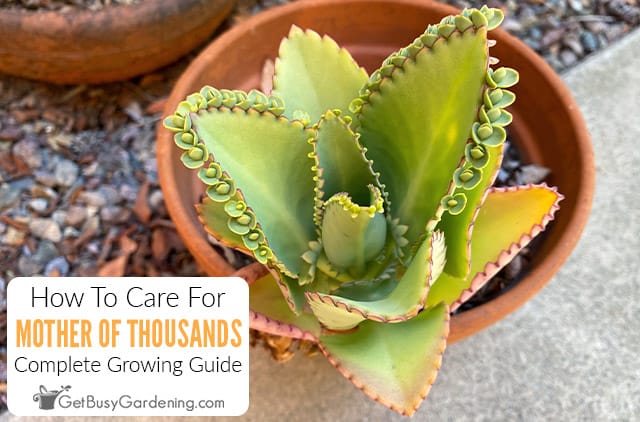This popular single-stemmed succulent is ideal for those just starting out in the world of gardening. It is easy to propagate, making it a great choice for those looking to increase the amount of plants they have to work with or to share with others. The leaves of this plant produce small bulbils along their edges. When the bulbils are detached and fall to the ground, they can grow into new plants.
Table of Contents
Care and Propagation Information
Kalanchoe daigremontiana “Mother of Thousands” has large, blue-green leaves and a tendency to spread. This can be inconvenient for some gardeners, so caution should be taken when planting this succulent due to its quick growth and easy propagation.
Watering
“Mother of Thousands” should be watered using the “soak and dry” method, which entails allowing the soil to dry out completely before each watering. This is the typical watering requirement for succulents.
Where to Plant
If you live in a region where temperatures drop below 30° F (-1.1° C), it is recommended that you keep Kalanchoe daigremontiana in a pot that can be brought indoors during winter. This succulent thrives in full sun to partial sun.
How to Propagate Kalanchoe daigremontiana “Mother of Thousands”
I refer to the “Mother of Thousands” as the Amazing Self-Spreading Succulent because it replicates so quickly! Its plantlets fall off the mother plant and easily establish themselves in the soil nearby.
Plantlets
To detach a plantlet from the mother plant, carefully pull it away from the leaf.
You can give the baby plants time to harden off by leaving them out for a day or two and then potting them in soil that drains easily.
You can also nurture the plantlets like sprouted seeds. Put them in soil that drains well and cover them with a clear plastic sheet to create a mini-greenhouse atmosphere. Let the plantlets develop roots and grow under the plastic wrap until they are ready to be transplanted into their own pots.
Care and Propagation Information
General Care for Kalanchoe daigremontiana “Mother of Thousands”
Watering
“Mother of Thousands” should be watered using the “soak and dry” method, which entails allowing the soil to dry out completely before each watering. This is the typical watering requirement for succulents.
Where to Plant
If you live in a region where temperatures drop below 30° F (-1.1° C), it is recommended that you keep Kalanchoe daigremontiana in a pot that can be brought indoors during winter. This succulent thrives in full sun to partial sun.
How to Propagate Kalanchoe daigremontiana “Mother of Thousands”
I refer to the “Mother of Thousands” as the Amazing Self-Spreading Succulent because it replicates so quickly! Its plantlets fall off the mother plant and easily establish themselves in the soil nearby.
Plantlets
To detach a plantlet from the mother plant, carefully pull it away from the leaf.
You can give the baby plants time to harden off by leaving them out for a day or two and then potting them in soil that drains easily.
You can also nurture the plantlets like sprouted seeds. Put them in soil that drains well and cover them with a clear plastic sheet to create a mini-greenhouse atmosphere. Let the plantlets develop roots and grow under the plastic wrap until they are ready to be transplanted into their own pots.
FAQ
What is Kalanchoe daigremontiana good for?
Alternate phrasing: Bryophyllum pinnatum Lam., a medicinal plant frequently used in traditional healing, has been believed to help with skin issues, arthritis, asthma, bruises, diabetes, infections, tumors, and ulcers (Majaz, Tatiya, et al. 2011).
What is mother of thousands good for?
Is the mother of millions toxic?
Why is mother of thousands toxic?
Mother of millions, hybrid mother of millions, and resurrection plant are all toxic when consumed, both for livestock, humans, and household pets. The cause of the plant’s toxicity is the presence of bufadienolides, which can lead to heart failure.



